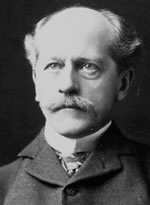
D. Sources of Influence and Transmission
6. Lowell, Percival. Works 1888~94.
Lowell’s years in Japan lead in unexpected ways to repercussions in English-language poetry. His Soul of the Far East (Boston: Houghton Mifflin, 1888) so stirred Hearn’s imagination that he set off to experience the mysteries for himself (see Stevenson, p. 313, and Bisland, p. 460, both noted at D9c), and so the great flowering of japonaiserie that may be traced to Hearn may itself be traced to a seed planted by Lowell. More direct reverberations from Lowell’s writing from Japan enter twentieth-century English poetry through their effects on Lowell’s younger sister, Amy. Her friend Florence Ayscough recalls that from the time of Percival’s visit to the United States from Japan in 1883, ‘Japanese prints and wood carvings [were] an integral part of Amy Lowell’s entourage, and books on Japan [were] always . . . upon her table’ (BI28). Lowell herself traces her fascination with Japan to Percival’s letters, books, and gifts from the country (BI15a, 20b, and see also 32), and the effects of this are apparent in her poetry—and in that of those who imitated her japonaiserie—from her first volume in 1912 (BI1) to her posthumously-published works of 1925 and 1927 (BI12 and 13). The Soul of the Far East may seem patronising from the perspective of the late-twentieth century, but together with Notô, an Unexplored Corner of Japan (Houghton Mifflin, 1891) and Occult Japan (Houghton Mifflin, 1894), the latter of which provided Yeats with his understanding of the relation between Shintô and demonic possession (see BL15c), Lowell’s writing from Japan shaped a significant part of the Anglo-American discourse about the country in the late nineteenth and early twentieth centuries. See also Abbot Lawrence Lowell, Biography of Percival Lowell (New York: Macmillan, 1935), Miyazaki Masaaki, Shirarezaru Japanologist: Lowell no shôgai (A study of the Japanologist Lowell. Tokyo: Maruzen, 1995), and A18, 56, BI1a, 7a10, 27, 29, 32, 39, CC2, 4, 6, and 10.






